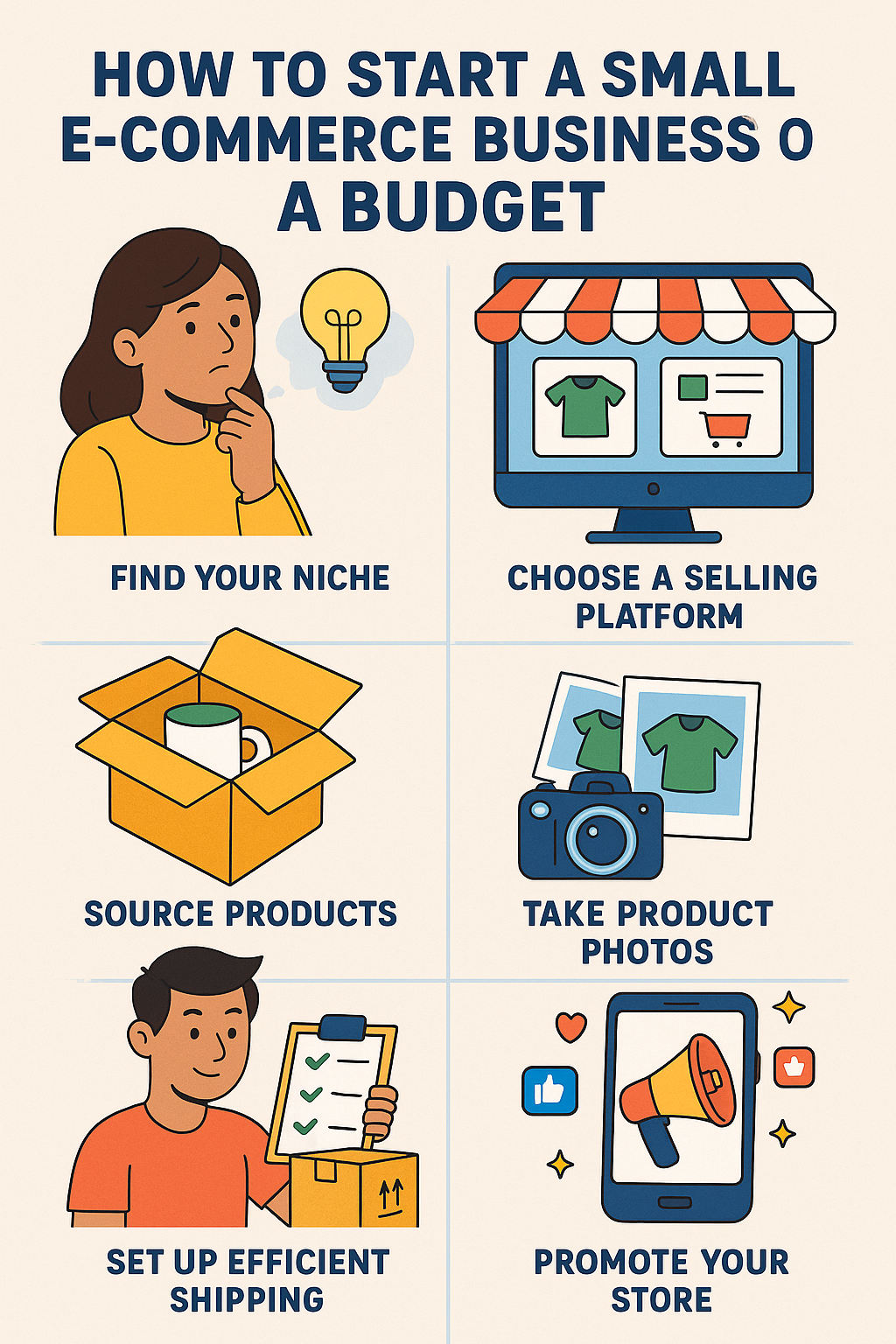Starting a food-related business is a dream for many entrepreneurs. Whether it’s baking cakes, selling homemade meals, or launching a food truck, the food industry offers endless creative and profitable opportunities — but it also comes with unique challenges.
In this comprehensive guide, you’ll learn the key steps to start a small business in the food sector, from planning your idea to complying with regulations and standing out in a competitive market.
Step 1: Choose Your Niche
The food industry is vast. The first thing you need to do is decide what kind of food business you want to start. Some popular niches include:
- Home bakery or pastry business
- Meal prep or healthy meals to-go
- Food truck or trailer
- Gourmet catering or private chef service
- Homemade sauces, jams, or packaged snacks
- Ethnic cuisine for delivery or events
- Small café or food kiosk
Choose something you genuinely enjoy making or selling — and something people in your area are likely to buy.
Step 2: Validate Your Idea
Before investing time and money, make sure there’s demand for your food product.
Ask yourself:
- Who would buy this?
- Are there similar products in my area?
- Can I offer something different or better?
Start small: offer samples to friends, family, or neighbors. Take your idea to a local market or online platform to get early feedback. Ask for honest opinions on taste, price, and packaging.
Step 3: Understand the Local Regulations
Food businesses are highly regulated for safety — and this varies by country and city.
You may need:
- Food handler’s certification or training
- Health inspections and licenses
- Authorization to cook at home (if permitted)
- Specific permits for food trucks or catering
- Labels with ingredients, allergens, and expiration dates
Always check with your local health department to know exactly what’s required. Skipping this step can shut down your business fast.
Step 4: Develop a Simple Business Plan
You don’t need a complicated 50-page document, but having a basic business plan helps clarify your goals and stay organized.
Include:
- Product menu – What will you sell? At what prices?
- Target market – Who are your ideal customers?
- Startup costs – Equipment, ingredients, packaging, licenses
- Sales channels – Will you sell online, in person, via delivery apps?
- Marketing strategy – How will people discover your business?
- Financial projections – Estimate income and expenses
This plan can also help if you want to apply for a loan or pitch to a potential investor.
Step 5: Start Small and Test
Don’t over-invest at the beginning. Use what you have, keep things simple, and improve over time.
For example:
- Start cooking from home (if legally allowed)
- Use basic packaging and improve it later
- Sell through WhatsApp, Instagram, or local apps before launching a full website
- Rent kitchen space part-time instead of building one from scratch
Small, consistent progress beats big, risky leaps — especially in food.
Step 6: Focus on Quality and Consistency
Your food is your product. If people love it once but are disappointed the second time, they won’t return.
Make sure every meal, pastry, or snack:
- Looks and tastes the same each time
- Is prepared safely and hygienically
- Uses fresh, quality ingredients
- Is delivered or presented attractively
Word-of-mouth is powerful in the food business — and it depends on consistency.
Step 7: Create a Strong Brand Identity
In a competitive market, your brand is what makes people choose you.
This includes:
- A catchy business name
- A memorable logo
- Your color palette and packaging design
- A unique tone or story that connects with your audience
- A social media presence that reflects your values
Even simple things like handwritten thank-you notes or behind-the-scenes content can humanize your brand and build loyalty.
Step 8: Use Social Media to Grow
Instagram, Facebook, TikTok, and even Pinterest are perfect platforms for food businesses. People eat with their eyes — so post high-quality photos, stories, and videos regularly.
Ideas:
- Time-lapse of you cooking
- Close-ups of your finished product
- Customer testimonials
- Polls or questions to engage your audience
- Announcements of promotions or seasonal items
Hashtags, local tags, and geolocation also help your content get discovered.
Step 9: Manage Your Finances Carefully
It’s easy to get excited about selling and forget to track your money. But staying financially healthy is key to long-term success.
Tips:
- Keep business and personal expenses separate
- Use a simple spreadsheet or accounting app
- Track ingredient costs and calculate profit per item
- Set money aside for taxes and reinvestment
- Adjust your pricing if costs rise — don’t undercharge!
Even with a small business, discipline with money makes a big difference.
Step 10: Ask for Reviews and Improve Constantly
After every order, ask for feedback. You can say:
“Thanks so much for your order! I’d love to know what you thought of it.”
Over time, use this feedback to:
- Improve your recipes
- Adjust your portion sizes or packaging
- Add or remove items from your menu
- Refine your customer experience
Continuous improvement leads to long-term loyalty and referrals.
Your Food Business Can Start Small — And Grow Big
You don’t need a big restaurant or a huge budget to succeed in the food industry. Many successful brands started in home kitchens, local fairs, or from Instagram DMs.
What matters is quality, consistency, smart planning, and a willingness to adapt. Take it step by step, treat your customers well, and always focus on creating something delicious and memorable.
You’ll be surprised how far that can take you.
